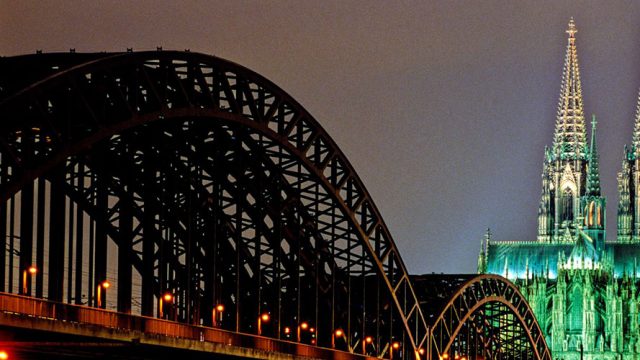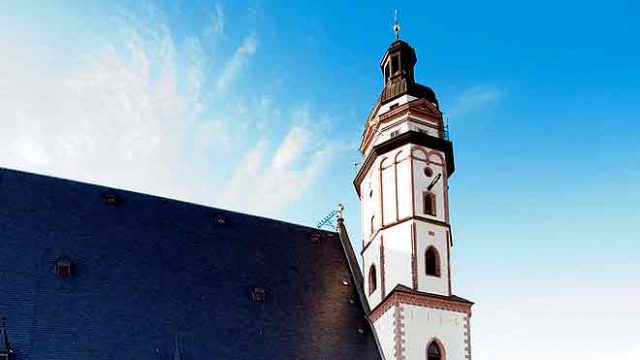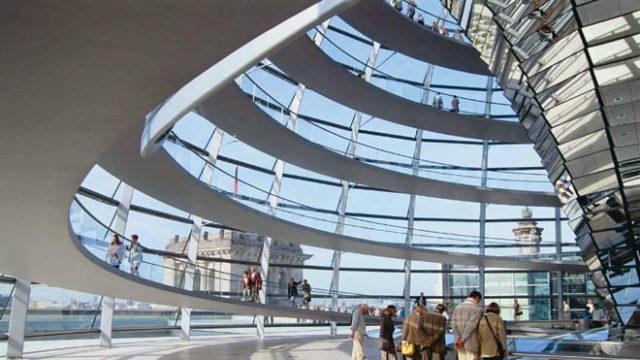Consider this paradox: the capital of Europe’s economic centre is a haven for artists. Surrounded by 1,000-year-old cities, it boasts a history that’s just 25 years old. Where soldiers once marched, students now lounge. And where a 43-km wall once cut the city into two incomplete halves, a web of public transportation connects each neighbourhood to the next, the former East and West labels difficult to detect. The city of Berlin is such a contradiction, and, with each year since the wall came down in October 1989, a happy, hippie, affordable one. Berlin’s political infamy has manifested itself as a cultural oddity. Sections of the Berlin Wall are on display in several neighbourhoods, reminding visitors of a 3.6-m-tall barrier that dictated East and West Berlin’s policies just one generation ago; now, it’s the canvas for amorous, activist graffiti. Stretches of the wall stand along the River Spree, known as the East Side Gallery, and invite visitors to walk alongside its brazen, vivid murals that convey bright and eccentric futures. Memorials abound: to World War II; to the “murdered Jews of Europe”; and to East Berliners who tried to flee — and failed. These plaques, tombstones, guard towers and bunkers remind locals and guests of the desperation that once pervaded the city. It is not a history to forget, but an anchor to a past that Berlin first survived, and then surmounted. The restlessness of Berlin in the 1960s, 70s and 80s is now being exhumed through the city’s cultural monopoly over Germany, and much of Europe. Music concerts, art exhibits and cultural festivals sprout as defiantly as weeds tickling what’s left of the wall. Stefan, a self-taught jazz musician, thinks Berlin’s music scene is too broad to define. “There are probably 1,500 to 2,000 concerts a day,” he says, waiting for the Naked Bath Jazz trio to begin their weekly set at Badehaus Szimpla Musiksalon in Friedrichshain. How a Berliner chooses one concert over another is a game of chance, making commitment difficult, which Stefan does not appreciate. “I prefer echtzeitmusik,” meaning “real-time” and referring to the improv world where underground concerts are advertised only through word of mouth, and performances are intimate. “There’s a sense of spannung… excitement,” Stefan translates, searching for the right word. The hall can seat 60, but is empty as the band sets up. By the time they begin, the room is full of loyal fans, like Stefan, who strikes invisible piano keys on his jeans with his fingers. Badehaus Musiksalon sits in Revaler 99, an outdoor space used for flea markets on the weekends, which houses a vegan restaurant, a gym, a sports arcade and another music venue (Cassiopeia), whose daily line-ups span geography and genres. On a Sunday afternoon, the space is a buzzing bazaar:a man sells electric guitars in one corner; a woman blends fresh juice in another. Badehaus quietly attracts crowds to its shaded bar and catchy electro-swing music, while Cassiopeia slumbers until sundown. Tourists looking for music and beer that’s off the beaten path should take this literally: Revaler 99 is off the main road, Revaler Strasse, past the graffitied walls and abandoned-looking warehouse and around the corner where, lo, the bustle of music, food and music awaits. Here, on a blazing summer day, Berliners slouch into beanbags and keep cool with a French musician, her bowtied pianist, fresh air and chilled beer. The sunshine, deck chairs and alcohol evoke a beach party, but 500m away, the music is echoing off a chunk of the Berlin Wall. Once the sun sets — only after 9.30 pm in summertime — entertainment and energy can be sought in other venues across the city. Clärchens Ballhaus, a dance house, is popular among locals and tourists for the dance floor at the entrance, around which sit tables for drinks and dinner. But this 19th-century dance hall is no nightclub; every evening honours a different dance, from salsa to swing. The experts might be older than expected but they move as gracefully as the waitstaff who dodge them with trays of pizza and beer. Clärchens is located in Mitte, just north of the city centre, surrounded by modern art galleries, including the hip Kunst-Werke (KW), whose entrance courtyard is as seductive as the art and architecture within, the latter perennially draped with fashionable, smoking hipsters. In Berlin, whose ubiquitous graffiti murals rival the natural foliage, even the anonymous artist is celebrated, not just the ones who make it into the KW. For a more traditional, but definitely not conventional, artistic experience, visit the Martin Gropius Bau (MGB), whose four concurrent exhibits are charged separately and plunge you into very different worlds of art via visuals, audio guide, and spatial creativity. A Hans Reichter exhibit about Dadaism includes art and film by his contemporaries, while the popular David Bowie exhibit one floor below is a smorgasbord of Bowie’s musicography, costumes, interviews, favourite books, and cover art. On the ground floor, Chinese activist-artist Ai Weiwei’s work, and work he has commissioned, stand pensive and imposing. Similar to MGB’s multi-storeys, Berlin’s architecture tells a layered story. Stone buildings in Mitte are relics from before World War II; other building façades have been reconstructed after residences were indiscriminately bombed when the wall was erected in 1961. The Berlin Zoo dates back to 1844 when its gates first opened; those gates were “updated” in 1899 to the world-famous Elephant Gate, built of Elbe Sandstone from the mountains on the border of Germany and the Czech Republic. Fifty years after the zoo opened, the Parliament building or Bundestag — still referred to as the Reichstag — was opened in 1894. The words Dem Deutschen Volke, or “To the German People” is carved above the entrance pillars — by a Jewish family of engravers who died in the Holocaust years later. Withstanding Hitler, fires, World War II and the division of Berlin, the Bundestag underwent reconstruction in 1990 by British architect Norman Foster. Atop the stone structure sits a glass dome with an opening that funnels fresh air down to the Parliament chambers (and funnels the rain and snow away). Post World War II, Germany is taking political transparency literally. Tourists are invited to tour the building’s glass dome (complete with audio guide), look down into the chambers and even snag a table at Käfer Restaurant for drinks, dinner or dessert. Where Soviet soldiers once stabbed their flags into the Reichstag’s roof, where the Nazi party was born, where bombs fell relentlessly, I enjoy wine, cheese, and a sunset. Streets made wide for tanks are now crowded with sidewalk seating for restaurants, bicycle lanes and parking, and tram routes. In the summer — when Berliners refuse to leave home for more than a week or two, I’m told — the Oberbaumbrücke, a main road between theartsy neighbourhoods, Kreuzberg and Friedrichshain, is turned into a mile-long art project. A roll of paper is stretched along the ground like a red carpet, only this one is trodden with hands holding paints and crayons, not feet in high heels. Artists show off and sell their creations. Children and adults study art at their respective eye-levels, and Berlin’s multi-layered personality — in topography, architecture, and now art festival — grows a little larger. Like its flea markets, Berlin’s art festivals are opportunities to “try out new parts of yourself,” says Claudia, 28, who has lived in Berlin for six years, and whose recent travels in India have half-inspired her to open a dosa stand in Berlin — not unlike an Australian woman who visited Berlin as a tourist years ago and today, leads bicycle tours around the city, peddling conviction and pedalling tourists through her new home. The Aussie is not Berlin’s only adopted tour guide. George was born and raised in Kenya, studied in the US, and came to Germany on work. He has lived here for the past 18 years. Smitten with the flourishing cultural diversity in a city once walled off to outsiders, he incorporates African colonial history into his tours. We begin at the top of Mauerpark, or Wall Park. Named for the parallel walls that run through it, the park is now a grassy, lively haven for locals and visitors: live music and dancing crowds; larger-than-life board games and busybasketball courts; fleamarkets, karaoke, graffitiartists and, of course, anendless supply of beer. This area used to be called der Todesstreifen — the death strip — that stretched between the two walls separating East from West Berlin. Anyone found here would be shot dead instantly. But no longer. On Sundays in Mauerpark, “anyone can be a star in Berlin,” George says with a grin. We get back on our bicycles to continue the tour, the seats freshly heated in the sun. Under this scorching June sun, the Carnival of Cultures wheels through Berlin. It is an array of the city’s cultural groups, each advertising their traditions, food and style. A Sri Lankan group in peacock-accented costumes dances and claps its way around a bend in the road. Berlin’s Irish contingent manages some half-hearted jigs. The Colombians have choreographed moves for 50 dancers, and the Kurdistan group — all five of them — swivel their bodies to a catchy drumbeat. A pro-vegetarian group expresses animal harmony in pig and cow costumes, and Hare Krishnas chant joyously. One-third of Berlin’s 3.5 million population has come to watch, holding children with one hand and beer bottles in the other. It’s a marvel that more bottles don’t shatter on the road, or lead to public chaos, but then again, Berlin can handle its beer. Every restaurant I go into, every corner shop and even the magazine stands in the subway sell beer. I can sit on the median of Unter den Linden, a central thoroughfare, and enjoy a beer while facing the Brandenburg Gate. Walking home from a nightclub, I find beer at a doner kebab joint on the street. In search of Berlin’s best currywurst, I locate the city’s oldest beer garden, Prater, a few feet away. The English Teehaus in Tiergarten (17th century hunting grounds turned into a park) serves tea and pretzels — and beer. Signs point tourists from the Berlin Zoo straight to Schleusenkrug, a merry spot where the sound of the canal, the tinsel of children’s laughter, and a guitarist make the first cold sip of a local brew that much more rejuvenating. The first Berlin beer I try is a Schultheiss, so pervasive that a sign for Schultheiss indicates any establishment where beer of any kind is sold or served. Incidentally, its brewery is located in the north-east of the city, on Indira-Gandhistrasse. As pleasing to the tongue as the beer it serves is Klunkerkranich (German for “wattled crane,” which is English for a large African bird), a rooftop bar in the hip neighborhood of Neuköln that sits on top of a mall. The view from Neuköln eight floors up is reminiscent of that from the Bundestag dome; I’m only missing the audio guide directing me to the various statues, bridges, buildings and parks dotted around the city. Berlin’s greenery, like its history, graffiti, and multi-coloured locals, does not go unnoticed. The year 2014 is the 25th anniversary of the fall of the Berlin Wall, which Berliners are increasingly referring to as “Ostalgia,” a play on nostalgia and ost, the German word for East. The nostalgia is yet another paradox, and perhaps my favourite in Berlin, because it works in both directions: backwards in time, when Mauerpark was still der Todesstreifen, as well as forwards, peering into Berlin’s newly gentrified enclaves. Simon, a café owner who moved to Berlin from Paris five years ago, acknowledges Berlin’s dynamic creativity. “I realised that things were changing, but there was still space for me to be part of this change.” Wearing a hat and humming a French tune, he is proud to be the “pure cliche of the European young guy who found a better life in Berlin.” He looks at me with a twinkle in his eye. “A hipster, maybe?” Getting there Visa Currency Where to stay AirBnB (airbnb.com) is an excellent option for informal, cheap accommodations that are more intimate than a hostel and lend a domestic flavour to your stay. You can rent a room in an apartment (becoming roommates with a local for the duration of your stay), giving you access to a kitchen and a private bathroom. Or rent an entire apartment. Price varies by neighbourhood: a room in an apartment south of the city centre, say in Neuköln, will cost Rs 2,400 a night, and an entire apartment closer to the city centre up to Rs 9,000 a night. What to see & do Bike tours: Berlin on Bike (berlin onbike.de), or Fat Tire Bike Tours (berlin.fattirebiketours.com) provide general tours of Berlin, as well as focussed routes along the Berlin Wall, or a particular neighbourhood. Tours are at least 3 hours long and worth the price (€19–24) Slug beer: Prater Beergarden, opened in 1852 and specialises in local brews such as Praterschweizer; Schleusenkrug Beergarden, relaxed and river-adjacent; Eastern Comfort, a bar on a boat near the East Side Gallery (as well as a hostel); Bateau Ivre Bar, where Manu Chao plays in the background and patrons can sit on a huge window sill; San Remo Upflamör may be deserted, but only because the bartender is at a table outside with a drink in her hand, so browse the magazines until she takes your order, and be sure to visit the restroom. The German National Tourist Board’s website (germany.travel) is a useful resource for travellers. Berlin Tourism’s website (visitberlin.de/ en) suggests itineraries and rates. Visit Berlin also has a help desk in the TV Tower in Amsterdamplatz. If you’re a student, ask for student discounts at Berlin venues. You’ll have to show eligible ID. Where to eat & drink Beer is available almost everywhere, the cheapest of them going for less than €3. Sample the local beers at beer gardens; the vendors will happily recommend their favourite. Top tip Download the Berlin subway map application, as well as the Berlin city map, both of which can be accessed offline.
The information
Several major airline, including Jet Airways, Swiss Airlines, British Airways, Lufthansa, Air France, and Turkish Airlines, fly from Delhi and Mumbai to Berlin for Rs 70,000 upwards. From Berlin’s Tegel Airport, take the TXL city bus and connect to other bus or train routes (both the S Bahn, or urban rail, and the U bahn, or metro), which will typically get you within walking distance of your accommodation. A metro pass (€2.60) lets you take buses, trains and trams for two hours in any direction.
You will need a Shengen Visa to travel to Germany, which will also grant you access to other EU member countries. Submit your application at least 15 days before travel. The visa costs €60 (eeas. europa.eu/delegations/india/more_info/ faq/schengen_visa_en.htm).
The primary currency in Germany is the euro. A few shops in the city centre may accept US dollars. Many establishments — restaurants, bars, and shops — do not accept credit cards. €1 = Rs 81.81
Like in most European cities, hostels are a popular form of accommodation. 2A (2a-hostel.de) charges Rs 2,300 a night for a double room, and Eastern Comfort (eastern-comfort.com), a hostel on a boat docked on the Spree, charges about three times more.
Museums: All of Museum Island (see Welcome Card for discount details); the Jewish Museum, Topography of Terror (free), Kulturbrauerei for the East Berlin Museum (free), Dali exhibit (student discount available), the East Side Gallery (free and outdoors), Schloss Charlottenburg (free to access the grounds; entry fee €10)
The best currywurst, Berlin’s famous traditional pork sausage, can be found at Konnopke’s Imbiss, right under the Eberswalder station. For schnitzel, a ubiquitous fried pork preparation, visit Markthalle, right off the U-Bahn Goerlitzer Bahnhof. The neighbourhood is mostly residential, making the meal feel local and relaxed. The Turkish Market that comes alive on the weekends in Kreuzberg allows locals and tourists to sample various fruits and vegetables, and feel transported, if temporarily, outside Germany.
The tour of the Bundestag, or Parliament building, is not to be missed, but requires an advance booking. On the roof of the Bundestag is Käfer Restaurant, which overlooks the city and offers dinner, dessert, drinks and cheese platters for reasonable prices. Do not be intimidated! Walk in and ask for a table.
Berlin on Bike
Berlin Wall
Bundestag





